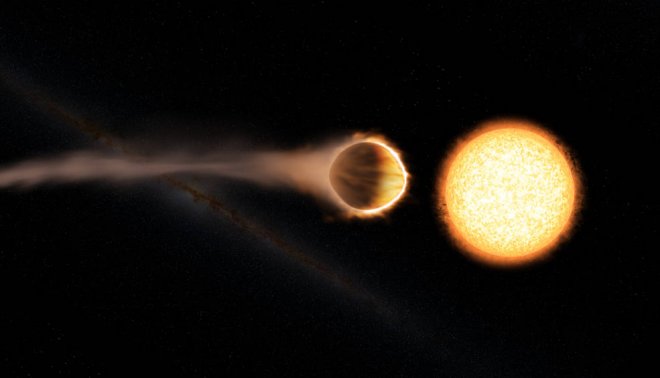
A team of scientists led by the University of Exeter, UK has discovered an exoplanet that has glowing water molecules in the atmosphere with the help of data from NASA's Hubble Space Telescope. According to reports, the giant Jupiter-like planet is located 900 light years from Earth and it is hot enough to boil iron.
Scientists say that this is the first evidence of an exoplanet stratosphere, the layer of atmosphere where temperature increases with higher altitudes, that has been found on a world outside the Solar System. WASP-121b is 1.18 times the mass of Jupiter orbiting the star WASP-121, which is located in the constellation of Puppis.
The "hot Jupiter" revolves about its star every 1.27 days and is almost within the Roche limit of WASP-121, where the tidal forces would tear the planet apart. Although, the scientists have found glowing water molecules on the exoplanet, but there is no evidence of any alien life as of now.
When asked about the super-hot gas exoplanet, Drake Deming, a professor at University of Maryland in the US said: "When it comes to distant exoplanets, which we can't see in the same detail as other planets here in our own solar system, we have to rely on proxy techniques to reveal their structure."
"The stratosphere of WASP-121b so hot it can make water vapour glow, which is the basis for our analysis," Deming added.
Some previous research that was done in the past decade has also indicated possible evidence for stratospheres on other exoplanets. In order to study the stratosphere of the exoplanet, the scientists used the technique of spectroscopy to analyse how the planet's brightness changed at different wavelengths of light.
The researchers said that the water vapour in the planet's atmosphere behaves in predictable ways in response to certain wavelengths of light, depending on the temperature of the water. The water vapour usually blocks light from beneath it at cooler temperatures. But, when it comes in contact with higher temperatures, the water molecules glow.
Similarly, the water molecules in the atmosphere of WASP-121b also "give off radiation as they lose energy, but it is in the form of infrared light, which the human eye is unable to detect."
"Theoretical models have suggested that stratospheres may define a special class of ultra-hot exoplanets, with important implications for the atmospheric physics and chemistry," Tom Evans from the University of Exeter in the UK said.
"When we pointed Hubble at WASP-121b, we saw glowing water molecules, implying that the planet has a strong stratosphere," Evans, who is the lead author of the study published in the journal Nature added.
"This super-hot exoplanet is going to be a benchmark for our atmospheric models, and will be a great observational target moving into the Webb era," Hannah Wakeford, a research fellow at the University of Exeter said.









